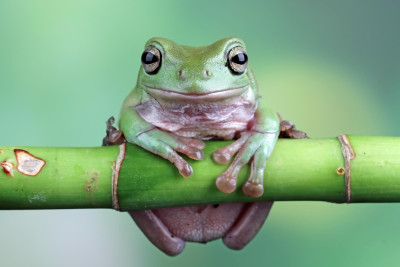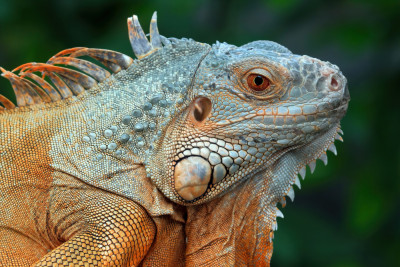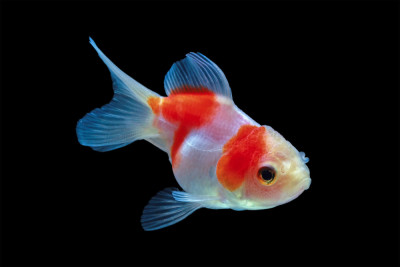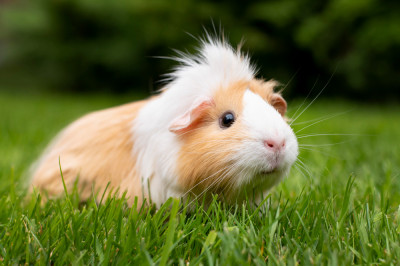Understanding Amphibians as Pets
Amphibians are a diverse group of animals that include frogs, toads, newts, and salamanders. They are known for their permeable skin, which allows them to breathe through their skin, and their life cycle, which typically includes an aquatic larval stage (tadpole) and a terrestrial adult stage. While they can make intriguing and unique pets, it's crucial to understand the following aspects of amphibian ownership before diving in:
1. Commitment and Lifespan
Amphibians can have relatively long lifespans, depending on the species. Some may live for just a few years, while others can thrive for several decades. Before adopting an amphibian, consider the level of commitment required and whether you're prepared for a long-term pet relationship.
2. Habitat and Environment
Different amphibian species have varying habitat requirements. Some prefer aquatic habitats with access to clean water, while others are terrestrial and need a well-structured enclosure with hiding spots. Adequate research into your chosen species' natural habitat is essential to provide a suitable environment.
3. Diet and Feeding
Amphibians are carnivorous and have diverse dietary needs. Some feed primarily on insects, while others may consume small vertebrates or even plants. Understanding your pet's dietary preferences and nutritional requirements is vital for their health.
4. Health and Care
Regular veterinary check-ups and attention to hygiene are critical for amphibian health. These animals can be sensitive to changes in their environment, so maintaining stable conditions in their habitat is essential.
5. Legal Considerations
Certain amphibian species may be protected by local or international laws, making it illegal to own or trade them as pets. Always ensure that you are in compliance with relevant regulations when considering an amphibian as a pet.
Choosing the Right Amphibian Species
Now that you have a basic understanding of the responsibilities that come with amphibian ownership, let's delve into the different species commonly kept as pets and their unique characteristics:
1. Frogs and Toads
Frogs and toads are among the most popular amphibian pets. They come in various sizes, colors, and patterns, making them aesthetically appealing. Some common pet frog species include the African Dwarf Frog, Red-Eyed Tree Frog, and American Green Tree Frog.
Pros:
- Fascinating behaviors, including jumping and vocalizing.
- Relatively easy to find in pet stores.
- Suitable for both beginners and experienced amphibian keepers.
Cons:
- Require a well-maintained aquatic habitat.
- May have specific dietary needs, including live insects.
2. Newts and Salamanders
Newts and salamanders are often chosen as pets for their distinctive appearance and aquatic lifestyle. Species like the Fire-Bellied Newt and Tiger Salamander are popular choices.
Pros:
- Unique aquatic lifestyle with striking appearances.
- Tolerant of cooler temperatures.
- Some species are relatively low-maintenance.
Cons:
- Need access to clean water and land areas.
- May be more challenging to find in pet stores.
- Specific care requirements for each species.
3. Axolotls
Axolotls, also known as Mexican Walking Fish, have gained popularity as pet amphibians due to their regenerative abilities and peculiar appearance. They are entirely aquatic and belong to the salamander family.
Pros:
- Remarkable regenerative abilities.
- Fully aquatic and don't require land access.
- Unique and engaging to observe.
Cons:
- Require a well-maintained aquarium with appropriate filtration.
- May need cooler water temperatures.
- Limited availability in some regions.
4. Caecilians
Caecilians are a less common choice for amphibian pets, partly due to their secretive, burrowing nature. These legless amphibians are native to tropical regions and may not be as readily available in the pet trade.
Pros:
- Unique and rarely seen in the pet trade.
- Well-suited for those who appreciate obscure and unusual animals.
Cons:
- Limited availability.
- Specialized habitat and care requirements.
- Less interaction compared to other amphibian species.
Making an Informed Decision
Choosing the right amphibian companion involves considering your preferences, lifestyle, and level of commitment. Here are some steps to help you make an informed decision:
1. Research Extensively
Take the time to research different amphibian species thoroughly. Learn about their natural habitats, dietary needs, and lifespans. Understanding their care requirements is crucial to providing a suitable home.
2. Assess Your Space and Resources
Consider the space you have available for your amphibian's enclosure, as well as your budget for creating and maintaining their habitat. Factor in the costs of heating, lighting, filtration, and food.
3. Evaluate Your Experience Level
If you're new to amphibian ownership, it's wise to start with a species that is beginner-friendly and forgiving of potential mistakes. More experienced keepers may explore species with more specialized care requirements.
4. Interact with Potential Pets
Whenever possible, interact with the amphibians you are considering. Observe their behavior and health at the store or breeder's facility. Healthy amphibians should be alert, active, and free from obvious signs of illness.
5. Consider Adoption
Consider adopting an amphibian from a rescue organization or adopting a pet that needs rehoming. Adoption can be a fulfilling way to provide a home to an amphibian in need.
6. Consult with Experts
Seek advice from experienced amphibian keepers, breeders, or veterinarians. They can offer valuable insights and guidance based on their expertise.
Conclusion
Choosing the right amphibian companion is a decision that requires careful consideration. Amphibians can make wonderful pets for those who are willing to invest the time and effort into providing them with a suitable habitat and proper care. Whether you opt for a frog, newt, salamander, axolotl, or even a caecilian, your new amphibian friend can provide you with a unique and rewarding pet-keeping experience. Remember that with the right knowledge and dedication, you can create a thriving environment for your chosen amphibian companion, ensuring both their well-being and your enjoyment of their company for years to come.







